The aim of every search engine optimization (SEO) strategy is to drive as many potential customers to a site as possible.
And for the right business operating in the right niche, product-led SEO — an organic search strategy that focuses on a product’s features and on a site’s user experience, rather than targeting the keywords that receive the most searches each month — is the most effective and reliable way to do just that.
Read on to discover the scenarios in which product-led SEO can be an effective strategy. Plus, we’ll provide five in-depth examples of sites that have executed winning product-led SEO plays.
What is Product-Led SEO?
“Product-led SEO” is a term coined by Eli Schwartz in his book of the same name. But it’s an SEO strategy that existed long before Eli came up with a catchy name for it.
The main goal of product-led SEO is to drive organic traffic. However, your product features guide your strategy, rather than the terms suggested by keyword research tools or competitor analysis.
In product-led SEO, the product and the content are one and the same. Think of the properties listed on Airbnb: the products themselves — the listings — are ranking for the company’s target keywords and matching the intent of potential customers’ searches.
Most SEO strategies target informational keywords with high search volumes. A product-led SEO strategy, on the other hand, aims to claim the top spot in the search results for terms that don’t get as many searches but that have a higher buyer intent — and therefore a higher conversion rate. Think “best things to do in Dublin” compared with “dog-friendly hotels in Dublin.”
Product-led SEO is extremely scalable, too, as it’s largely built with templates. That means content creation is about finding interesting data that will make your pages more useful to visitors and then creating templates that present this data in the best way possible.
A product-led approach to SEO also helps you create strong relationships with returning users, as opposed to simply capturing clicks for the same terms your competitors are trying to rank for. This means your brand is less reliant on SEO as a channel, and your site is less dependent on the whims of search algorithms.
Sounds great, right? Let’s dive into some examples to see if this tried-and-tested path to serious SEO growth is a good route for your business.
What Are the 5 Types of Product-Led SEO?
Product-led SEO strategies generally fall under one of five umbrellas. Here’s a quick look at each one to give you an idea of which might be the best fit for your business:
1. Programmatically Generated Landing Pages
Programmatic SEO (pSEO) is the process of creating hundreds, thousands, or even millions of pages that all employ the same template but include different information.
JustWatch — a site that tells visitors what streaming platforms a movie or TV series is currently available on — is a great example of a pSEO play:

Each landing page tells users, at a glance, where they can watch a film or TV show they want to see.
And a “site:” search reveals that JustWatch has generated more than 20 million pages using this template:

We can’t promise that there’s a pSEO opportunity this perfect in your niche. But it's well worth thinking about ways you could employ pSEO, as creating this many pages can lead to serious SEO growth.
2. Product Inventory
Food delivery services like Just Eat are perfect examples of product inventory sites.
These sites aggregate all the restaurants that offer takeout or delivery in a location, thereby eating up all the food-related “near me” searches:

3. UGC Content
A user-generated content (UGC) strategy involves using content created by other people (site visitors or customers) — such as reviews, photos, and data collected in surveys — on your site.
This adds social proof and an authentic voice to your content. Oh, and did we mention that UGC is completely free?
For example, Goodreads is built on UGC: its users’ book reviews and “best of” lists. And it’s user-generated lists appear in the top three organic results for keywords like “best fantasy books”:
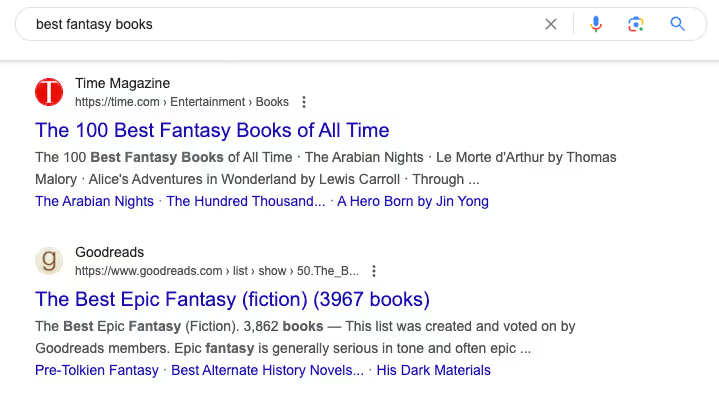
The same is true for “best science fiction books”:

It’s also true for “best young adult books”:

Not bad for pages that Goodreads users created on the site for free.
4. Marketplaces
Marketplaces aggregate products or services available within a vertical to make it easy for users to find what they’re looking for.
For example, if you’re looking for a hotel in London, you just need to head to Booking.com:
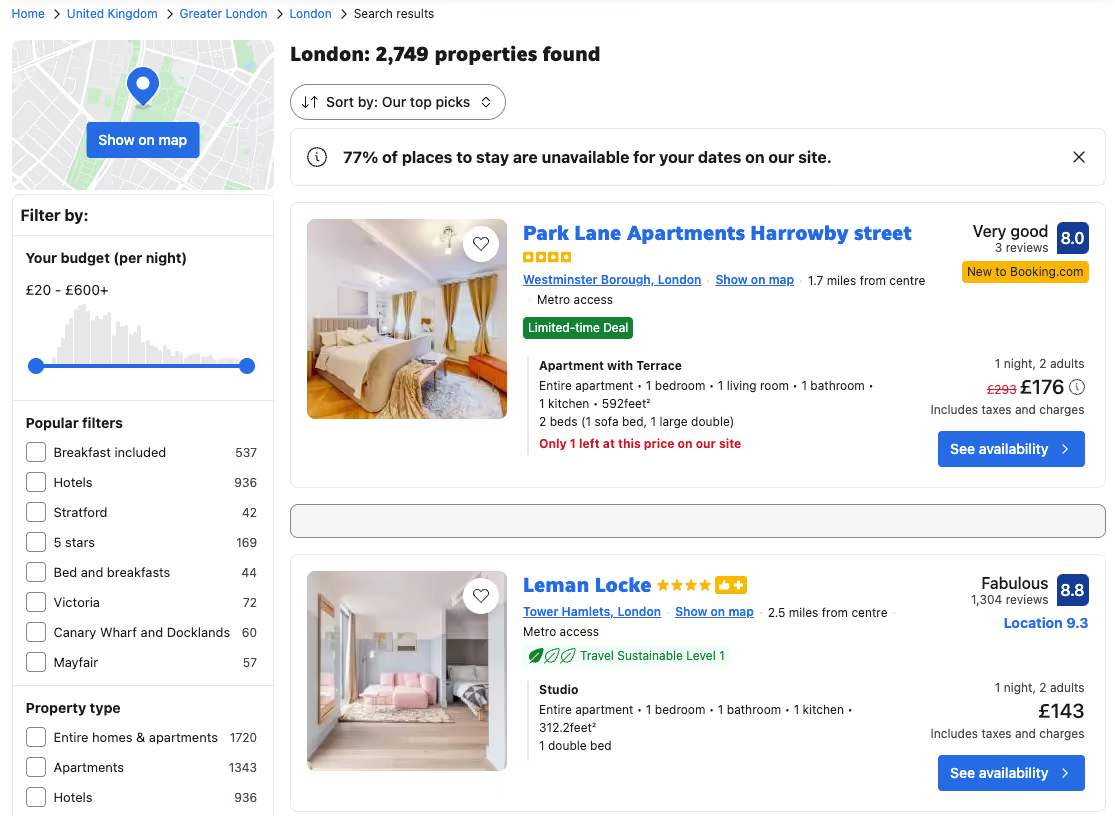
Marketplaces need to provide a great user experience to become the go-to aggregator for their target customer. Plus, they need to be backed by a serious marketing budget to break into a competitive niche.
But because Booking.com has captured so much demand that it’s become a household brand in the UK, more hotels want to be listed on the site. This creates a flywheel effect — and ultimately, it becomes very hard for would-be contenders to compete.
5. Apps
Trying to boost the online visibility of a SaaS product? Focussing your SEO strategy on your apps and integrations can make for an effective product-led SEO play.
The Slack App Directory is a great example. For example, the top result for “connect Slack to Outlook calendar” is this page:

This matches searchers' intent with the exact information they need. And since it wouldn't make sense for any other site to rank for this term, it’s a relatively easy way for Slack to capture high-intent search traffic.
In-Depth Examples of Product-Led SEO
Let’s take a deep dive into several websites that are great examples of each of these strategies:
1. Forbes’s Programmatically Generated Landing Pages
Forbes’s Profile pages are a great example of a simple pSEO play that ranks for some high-traffic keywords.
For example, if I search for “Jeff Bezos net worth,” Bezos’s Forbes profile is currently the third organic result (with the Forbes Real-Time Billionaires List sitting in the top spot):
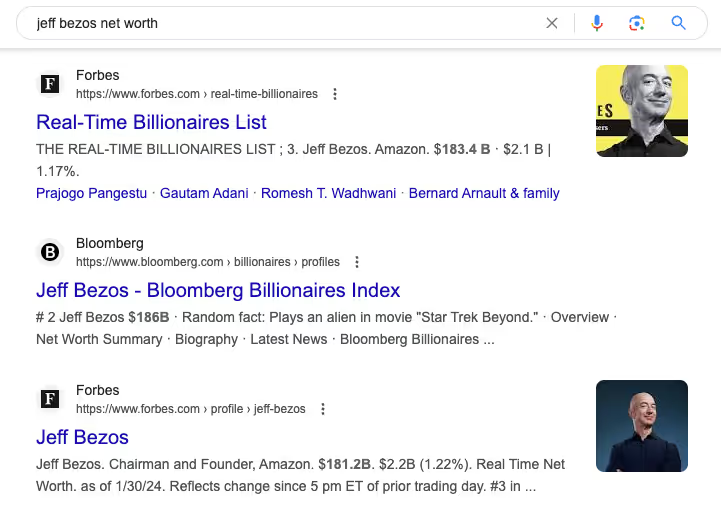
The page is simple but effective, featuring some basic data about Bezos, such as:
- His real-time net worth.
- His photograph.
- His current job title.
- A short bio presented in bullet points.
- A graph tracking the rise and fall of his personal wealth over time.
- A table of “personal stats” like his age, his marital status, and how many children he has.
- Some of his most famous quotes.
There’s nothing groundbreaking here, but the page covers enough about Bezos — and gets enough brand equity from being on the Forbes site — that it ranks for all kinds of high-traffic queries, from “Jeff Bezos biography” to “who owns Amazon” to “is Jeff Bezos dead.”
These Profile pages are packed with internal links to other Forbes content, such as its List pages:

They also include links to related Forbes Profiles of people and companies:
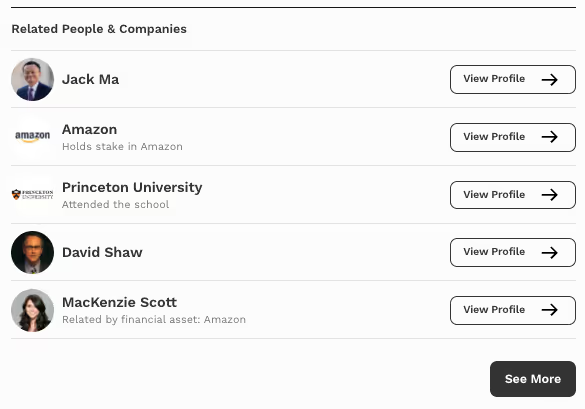
And they include articles featuring the subject of the Profile page:

These internal links give the site a huge SEO boost and help visitors discover more Forbes content they might be interested in, potentially keeping them on the site longer.
2. Rightmove’s Product Inventory
To build a moat as a product inventory site, you need to provide the best possible user experience. And few sites provide better UX than Rightmove, the UK’s biggest real estate listings site.
The location pages allow users to filter results by dozens of criteria, from maximum price to whether or not the property is newly built:

Users can even prioritize properties with a specific feature, such as a pool:

And Rightmove aims to create return users by allowing visitors to save searches and create email alerts for when new properties that fit the criteria they’re looking for are listed:

Each city page features dozens of internal links to programmatically generated pages that track house prices in the area, pages that target long-tail keywords, nearby location pages, and more:
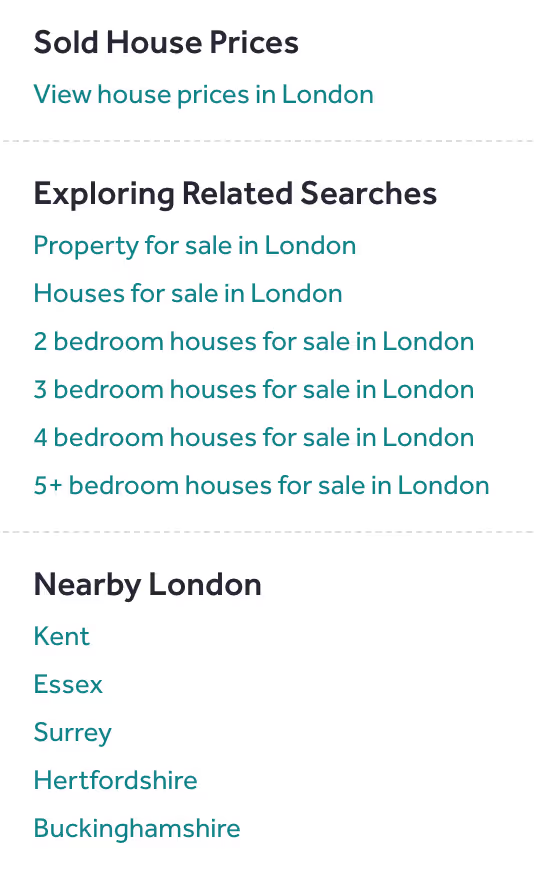
And each property page includes all the information a user would want, from high-res photos of the property to a floor plan:

Users will also find a map showing where the property is in relation to the nearest public transportation stations and stops and in relation to schools:
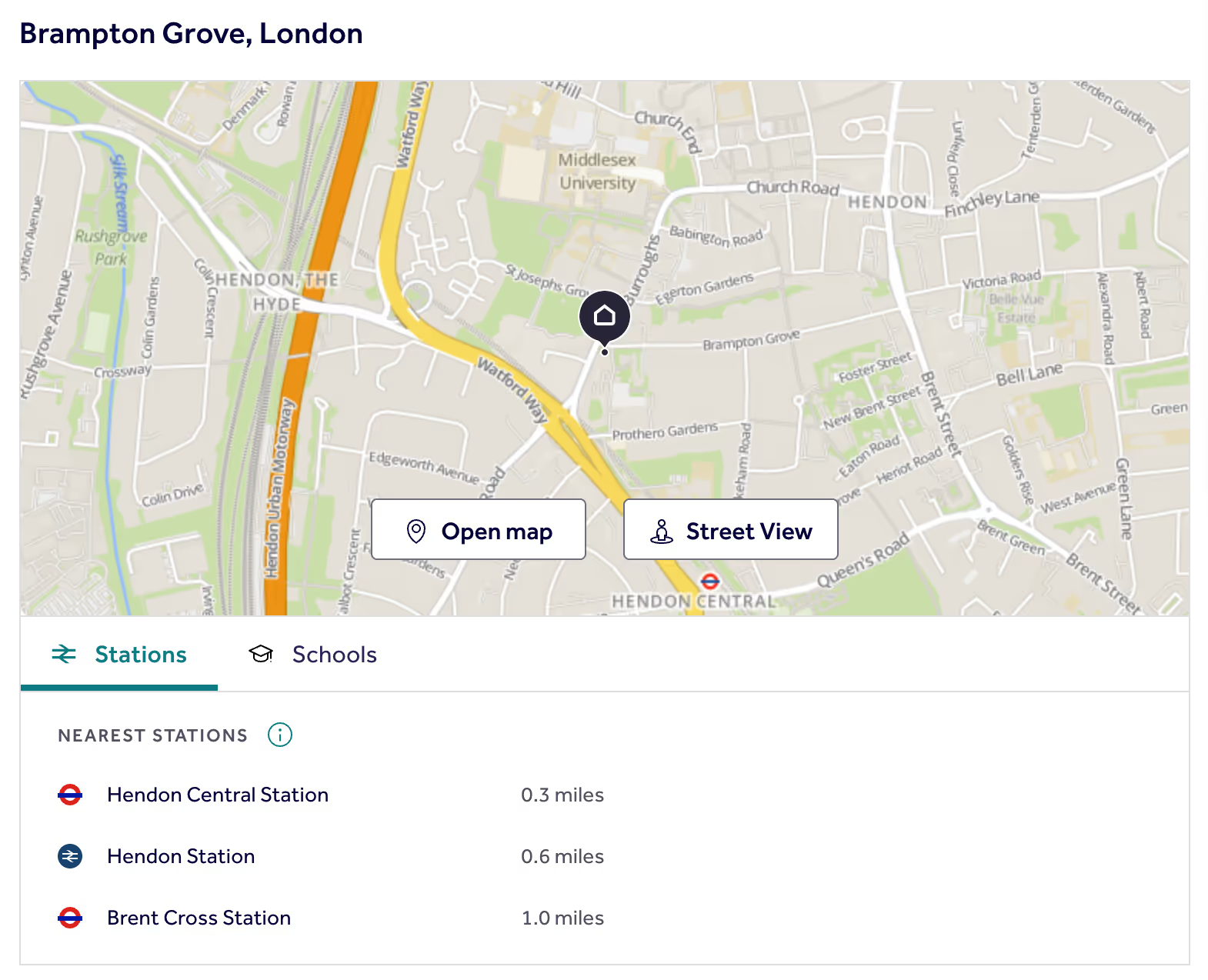
Each property page features a mortgage calculator that visitors can use to see whether the property is within their price range (and the calculator is monetized through an affiliate link to a mortgage provider):

To succeed, product inventory-driven sites need to provide a user experience like Rightmove’s, one that keeps users coming back time and time again.
3. User-Generated Content from Canva and Greg
Canva users have created tens of thousands of publicly available templates on the site.
And Canva shares that vast library of UGC, segmented by use case, in its Create section, which features landing pages for everything from resumes to YouTube thumbnails:

This packages all those user-generated templates the way people search for them, throwing rocket fuel on the site’s SEO efforts.
The result? To take just one example, Canva’s birthday card templates page appears for high-traffic terms like “printable birthday cards,” “birthday card template,” and “birthday card designs.”
UGC can also be used to add authenticity and social proof to programmatically generated pages.
Greg — an app that identifies a houseplant from a photograph and then tells you how to care for it — has a plant-care section full of advice related to common varieties of houseplants.
The page includes programmatically generated content such as guidelines for how often to water a particular variety of plant (depending on whether it's in direct sunlight and how big of a pot it’s in):
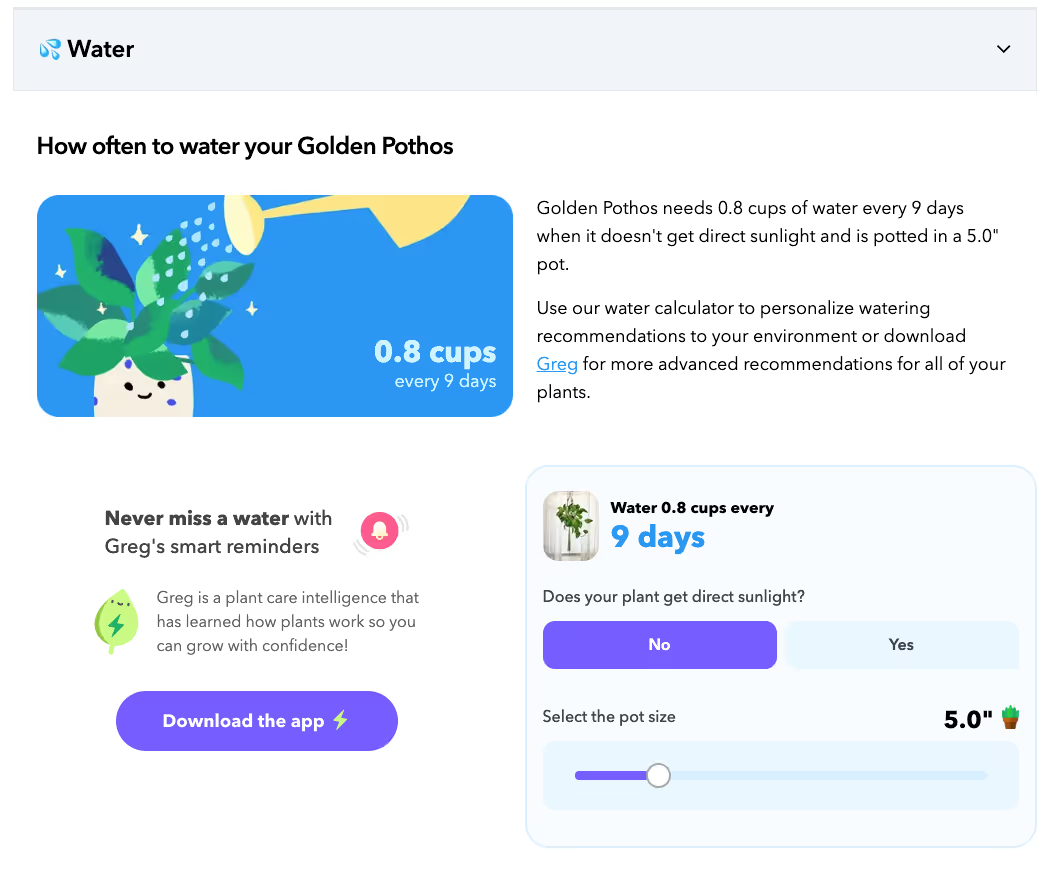
This pSEO content is supplemented by UGC pulled from the Greg community:

This gives these programmatically generated pages a serious social proof boost. Plus, it acts as an SEO-friendly FAQ section — for example, with content that answers the question “Why is my snake plant not growing?” appearing on this particular page.
4. G2’s marketplace
G2 has mastered the art of matching search intent with its marketplace SEO strategy.
The site features comparisons of software organized by category. For example, searching for “best employee engagement software” leads me to this page on the G2 site:

The reason G2 tops the search results for such a competitive term is that it truly gives visitors all the information they need in order to make an informed decision when choosing software in a given category. Visitors to this page find:
- Software is ranked on factors such as how easy it is to use and how good the company’s customer support is.
- The industries and market size the software is most popular in so users can see at a glance whether it might be a good fit for their business.
- Who the product’s typical users are, so users can see if it might suit their specific requirements.
When users have narrowed down their choices, the individual software pages offer in-depth reviews from the products’ real users:
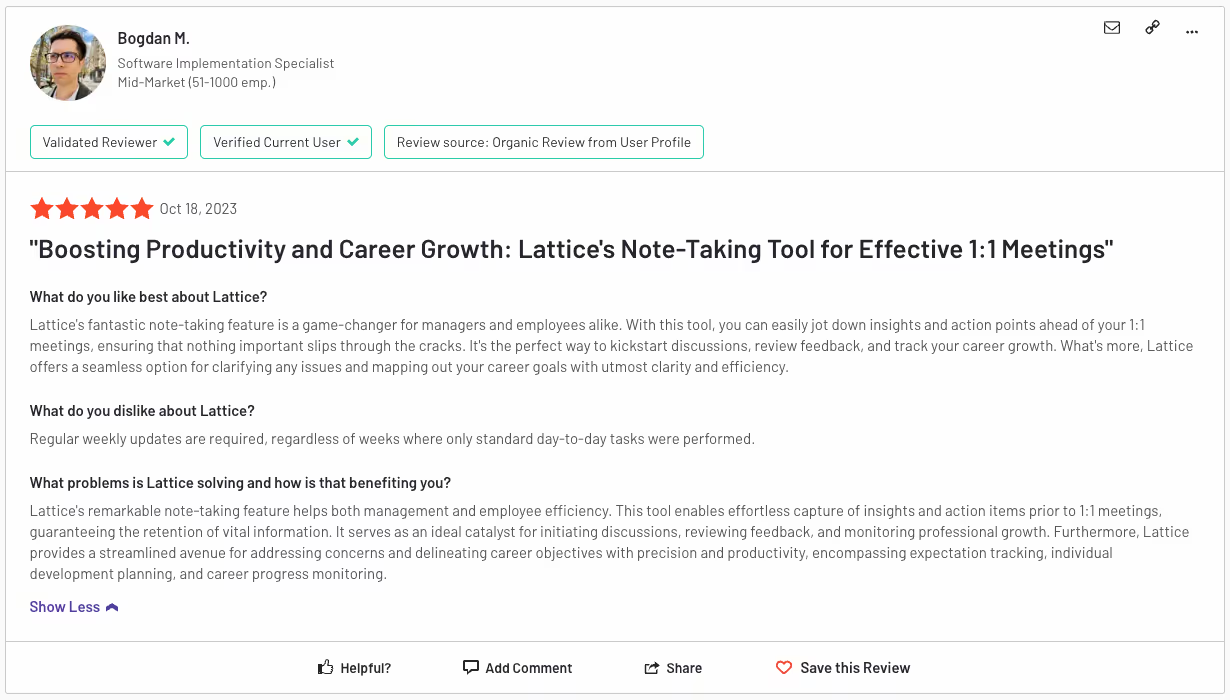
If a competitor wanted to replace G2 as people’s software comparison site of choice, they’d have to provide a better user experience. G2 has carved out a seriously deep moat for itself with its many years’ worth of in-depth reviews.
Appcues apps
Appcues is a no-code user-onboarding tool that integrates with other apps like Hotjar, Kissmetrics, and Slack. So it’s only natural that Appcues users — and potential Appcues users — will want to know how to integrate the tool with the rest of the apps in their tech stack.
Appcues ranks at the top of Google SERPs for searches like “Appcues HubSpot integration,” through integration pages like this one:

This page includes links to pages that walk you through the different ways to connect Appcues and HubSpot:

It also links to guides to the common workflows that the integration is used for:
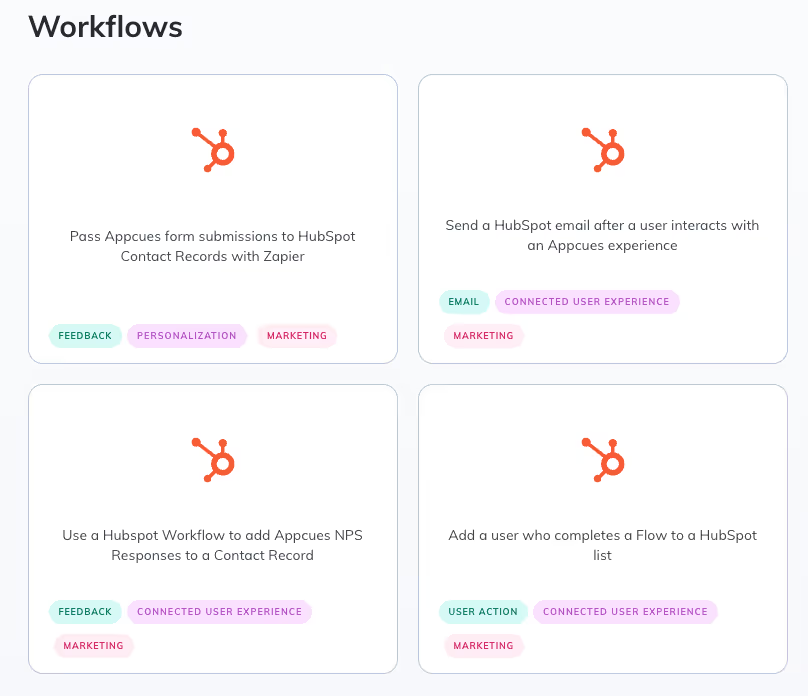
This gives Appcues users an overview of the tasks they can automate with this integration, helping them get started with Appcues as quickly as possible.
And since potential Appcues customers might have found themselves on this page while researching whether the tool easily integrates with their current tech, it ends in a CTA for a free trial:
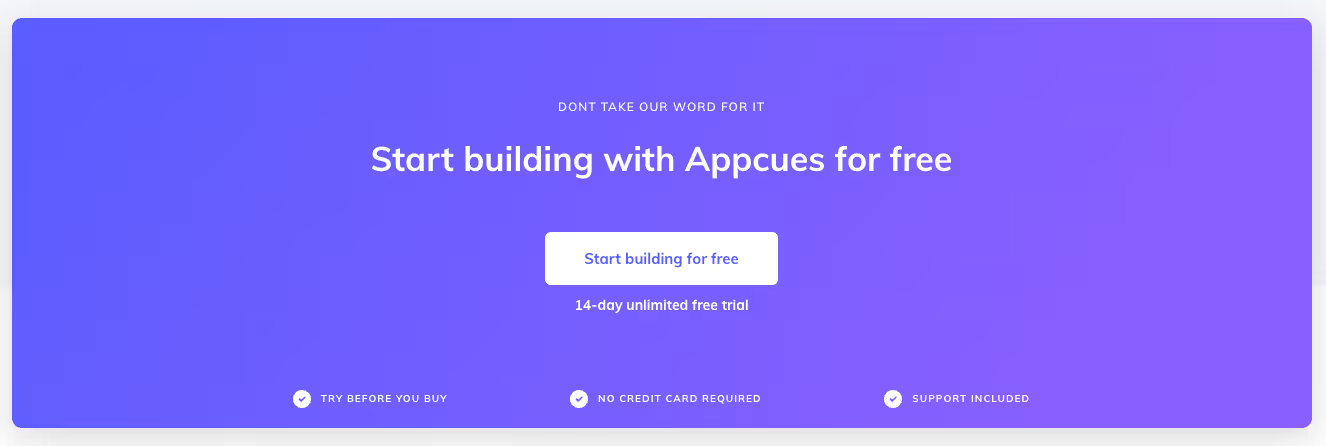
These Appcues pages might not be the sexiest bits of content marketing you’ll ever see. But they’re a great example of how effective simple pages that answer long-tail keywords with high-purchase intent can be. And that’s really the essence of product-led SEO.
Product-Led SEO vs. Traditional SEO?
If you’ve made it this far, you know that product-led SEO is a scalable strategy that lets you quickly target thousands of high-buyer-intent keywords.
So it’s pretty clear that you should forget about “traditional SEO” and go all in on a product-led strategy, right?
Well, not exactly.
The most successful product-led SEO strategies happen when a product’s features overlap perfectly with a mountain of keywords that your target customers are actually searching for. And not every business operates in a vertical where that’s going to be the case. So while it works great for any kind of aggregator site, product-led SEO isn’t a viable organic growth strategy for every company.
Even if product-led SEO is a great fit for your business model, that doesn’t mean blog posts can’t help move the needle on your organic growth strategy. Take ConvertKit, the creator marketing platform, as an example. A glance at the site’s footer shows that the company’s SEO strategy involves both product-led content (an Email template marketplace and an Integrations landing page) and “traditional” top-of-funnel content (a Blog and Knowledge Base) and bottom-of-funnel content (its Product page and Use cases pages):
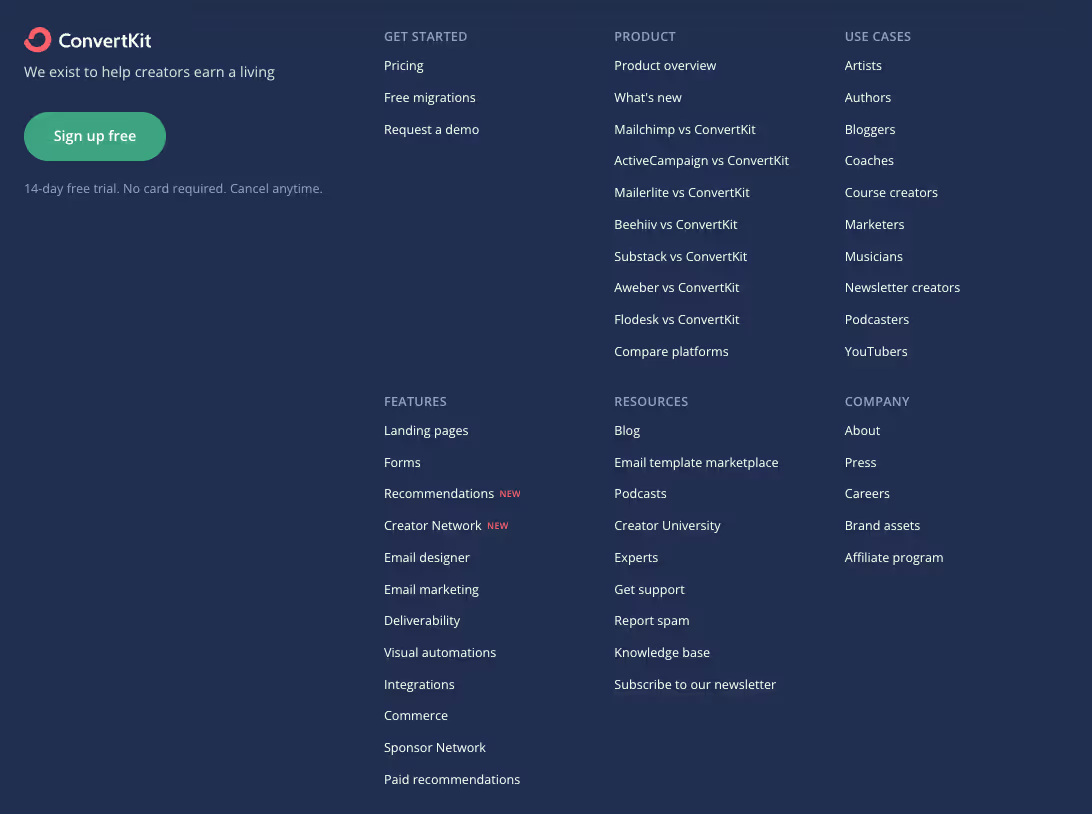
If you’re ever confused about whether a product-led or traditional SEO play is the right way to tackle the keyword you’re targeting, let search engine results be your guide. As a rule of thumb, if long-form content is ranking for a keyword, you should be targeting it with long-form content. And the same goes for a short product-led page packed with lots of data.
Final Thoughts
Some of the world’s most successful online businesses were built on the back of product-led SEO strategies. And while it doesn’t make sense for every company or every vertical, if you can find a product-led angle to add to your SEO strategy, then it could add rocket fuel to your organic growth.
We hope one of the examples we’ve highlighted in this article has sparked a bright idea for product-led SEO play for your business.





